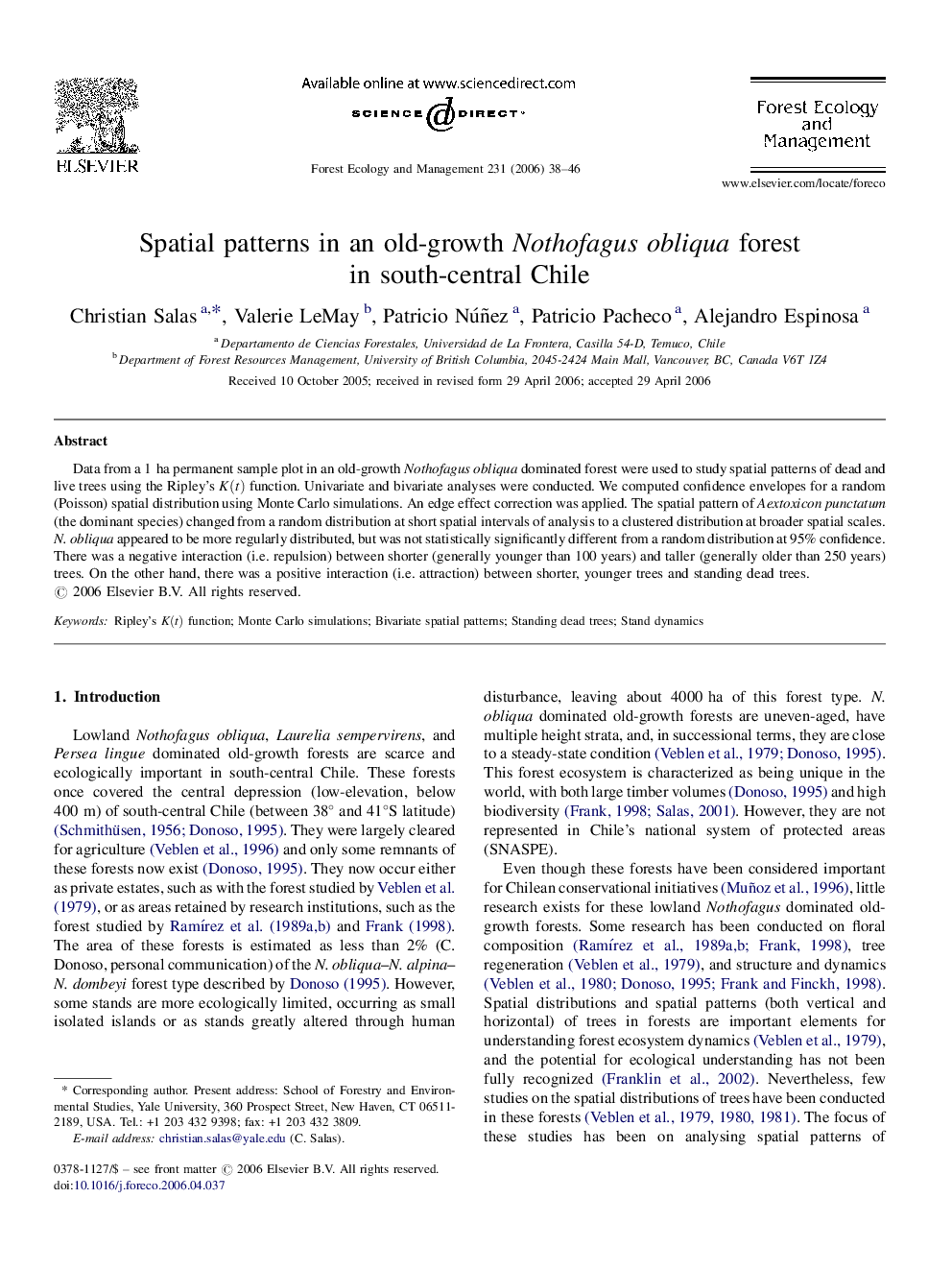| Article ID | Journal | Published Year | Pages | File Type |
|---|---|---|---|---|
| 90863 | Forest Ecology and Management | 2006 | 9 Pages |
Data from a 1 ha permanent sample plot in an old-growth Nothofagus obliqua dominated forest were used to study spatial patterns of dead and live trees using the Ripley’s K(t)K(t) function. Univariate and bivariate analyses were conducted. We computed confidence envelopes for a random (Poisson) spatial distribution using Monte Carlo simulations. An edge effect correction was applied. The spatial pattern of Aextoxicon punctatum (the dominant species) changed from a random distribution at short spatial intervals of analysis to a clustered distribution at broader spatial scales. N. obliqua appeared to be more regularly distributed, but was not statistically significantly different from a random distribution at 95% confidence. There was a negative interaction (i.e. repulsion) between shorter (generally younger than 100 years) and taller (generally older than 250 years) trees. On the other hand, there was a positive interaction (i.e. attraction) between shorter, younger trees and standing dead trees.
